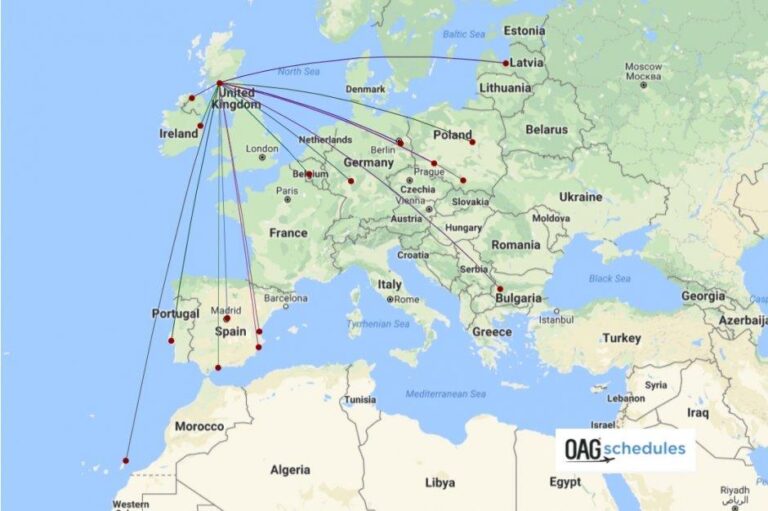Ryanair Route Cuts at French Regional Airports: Will There Be More?
In a significant shake-up for regional air travel, Ryanair has announced a series of route cuts affecting several airports across France. As the low-cost airline reevaluates its operations amid fluctuating demand and economic pressures, questions arise about the future of air connectivity in France’s regional hubs. With the potential for further reductions on the table, local economies, tourism, and travelers are left wondering what these changes mean for the viability of regional air service in the long term. In this article, we delve into the implications of Ryanair’s decision, the factors driving these cuts, and the likelihood of more routes being axed in the coming months.
Ryanair Reduces Services at Key Regional Airports in France
Ryanair has recently announced a reduction in its services at several key regional airports across France, raising concerns among travelers and local economies alike. Major airports affected include Nantes, Bordeaux, and Lille, which are seeing significant route cuts that could limit travel options for both business and leisure passengers. The airline’s decision is reportedly influenced by a variety of factors, including soaring operational costs and changing demand patterns in the aviation sector.
Industry analysts suggest that this might be a precursor to further reductions, not just in France but potentially across Europe. Local authorities are expressing worries over the potential economic impact, particularly in regions that benefit from tourism and transport links. As airports brace for the fallout, they are actively seeking partnerships with other carriers to fill the void. Potential measures include:
- Subsidies for new airline routes
- Enhanced marketing campaigns
- Collaborations with local tourism boards
Impact on Local Economies and Tourism Potential
The recent route cuts by Ryanair at several regional airports in France have raised significant concerns regarding the future of local economies and their dependence on tourism. These reductions threaten to disrupt the flow of visitors, which is crucial for small towns and cities that rely heavily on tourist revenue. Local businesses, including restaurants, hotels, and shops, may face declines in customer numbers, leading to fewer jobs and potential closures. The ripple effect can extend beyond immediate economic impacts, affecting community services and public morale.
Moreover, the potential for tourism development in these regions might be stymied, as fewer flight options could deter international visitors. Local governments and tourism boards may need to rethink strategies to attract tourists, perhaps by investing in alternative forms of transportation or focusing on regional attractions that do not rely on air travel. Key areas for exploration could include:
- Transportation partnerships with rail and bus services
- Enhanced marketing campaigns targeting domestic travelers
- Development of local experiences that draw tourists regardless of air access
| Airport | Previous Routes | Economic Impact |
|---|---|---|
| Beauvais | Multiple European destinations | High |
| Carcassonne | Seasonal routes to the UK | Moderate |
| Rennes | Connections to Spain | Low |
Future Outlook: Will More Routes Face Cuts?
The recent cuts to Ryanair routes at several French regional airports have raised significant concerns regarding the future of air travel in these locales. Industry experts suggest that if current trends continue, further reductions may be inevitable. Factors contributing to this potential decline include the competitive landscape, fluctuating fuel prices, and changing travel demand patterns influenced by economic conditions. As low-cost carriers assess their operational costs, regional routes may be deprioritized in favor of more lucrative international destinations.
Stakeholders, including local governments and tourism boards, are closely monitoring the situation as they devise strategies to mitigate the impact of these adjustments. Possible measures include:
- Incentives for airlines to maintain or expand routes
- Enhanced marketing efforts to attract more travelers
- Partnerships with travel agencies to boost visibility
In the face of uncertainty, a collaborative approach between airlines and regional authorities could play a pivotal role in safeguarding the connectivity that supports local economies.
Strategies for Regional Airports to Adapt and Thrive
As regional airports face uncertainties due to route cuts from major carriers like Ryanair, adopting proactive strategies is essential for sustainability and growth. Partnerships with local businesses can create mutually beneficial relationships that encourage both tourism and local patronage. For instance, airports might collaborate with hotels and attractions to offer combined travel packages, thereby enhancing the travel experience while boosting regional economies. Furthermore, initiatives focused on local community engagement can drive awareness and support from residents, making them more invested in the success of their own airport.
In addition, diversifying services and routes can help regional airports reduce their dependency on a single airline or market. This could involve attracting low-cost carriers, charter services, or even expanding into cargo operations to tap into the rising demand for shipping. Another crucial strategy is improving passenger experience and facilities, such as offering modern amenities, efficient check-in systems, and enhanced customer service. These improvements can differentiate regional airports from larger hubs, making them a more appealing option for travelers. Connecting with regional tourism boards to promote flights and new destinations can also spur growth as travelers seek unique experiences.
To Conclude
As Ryanair continues to adjust its operations amidst evolving market conditions, the strategic cuts to routes at various French regional airports raise significant questions about the future of air travel in these areas. The potential for further reductions looms, prompting both concern and speculation among local economies reliant on tourism and connectivity. Stakeholders, including airport authorities and regional leaders, will undoubtedly be monitoring Ryanair’s next moves closely. As the airline navigates the complexities of post-pandemic recovery, the impact of these decisions will be felt both in the skies and on the ground. The coming months will reveal whether this marks a temporary realignment or a more profound shift in the landscape of regional air travel in France.




